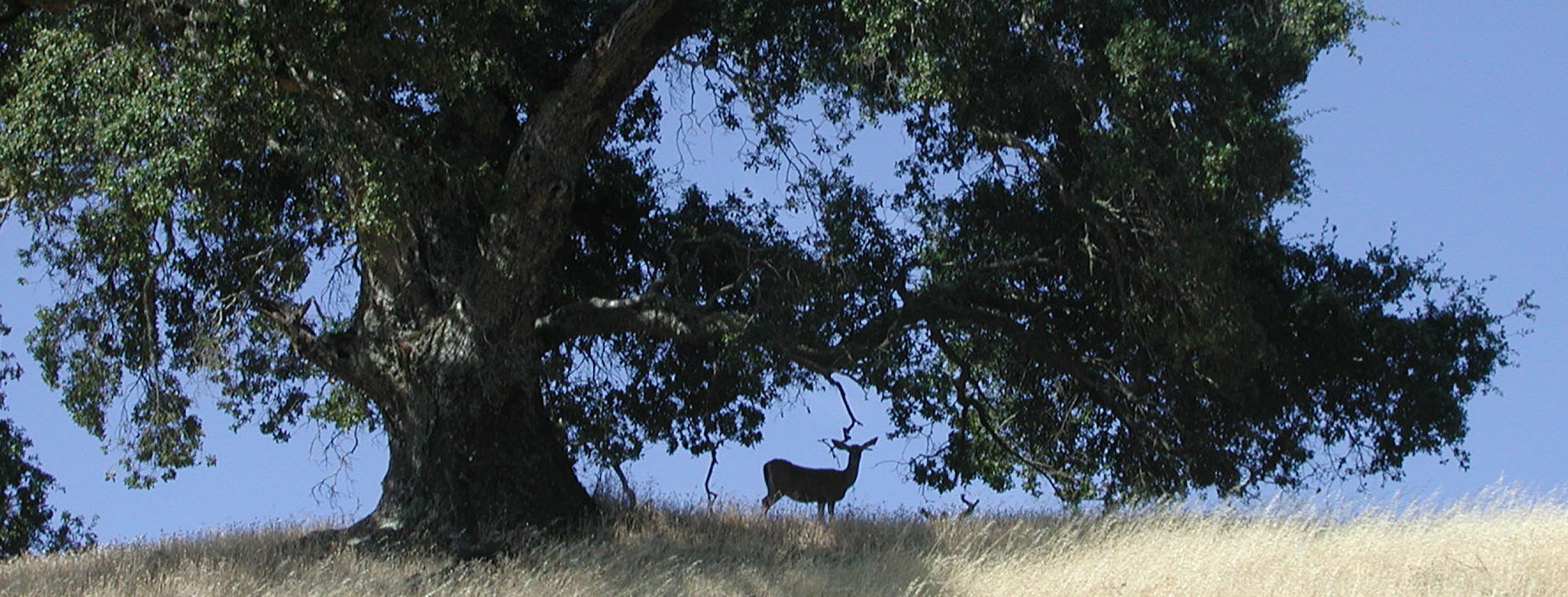Natural History
For eight years prior to the filling of Lake Sonoma, teams of archaeologists, cultural anthropologists, architectural historians, ethnobotanists, historians, and Native American traditional scholars conducted extensive studies of the lands that now lie under the lake. According to their reports, they discoverd more than 120 archaeological sites, ranging from ancient prehistoric middens (trash heaps) to 19th-century ranches. They also interviewed five generations of Dry Creek and Cloverdale Pomo Indians, ranging in age from 14 to 113 years.
The Native Americans lived on the lands and also cultivated several species of plants for basketry, ceremonial use and traditional healing. Many of these plants were transplanted to new locations downstream from the dam to save them. Archaeologists also recovered -- and saved -- sacred petroglyph rocks.
In addition to Native Americans, generations of Anglo and Mexican farmers lived on the lands. In the 1850s, Alexander Skaggs started construction of one of the very first hot springs resorts in a valley about nine miles west of Geyserville. In its heyday, it attracted more than 300 guests a day. The resort closed in 1942 -- and is now seen only by the fish!
Speaking of rhe fish, Lake Sonoma is home to the Congressman Don Clausen Fish Hatchery -- the most modern hatchery facility in California. It was built concurrently with the dam to help mitigate the loss of natural habitat for three fish -- Chinook and Coho Salmon, and Steelhead Trout. The hatchery is a great place to visit at any time, but is particularly fun from January through April, when wild Steelhead swim up Dry Creek to the hatchery and climb the fish ladder to spawn a new generation.
Wildlife remains abundant at Lake Sonoma. While early settlers raised a variety of livestock (cattle, sheep, goats), they also were avid hunters of quail, deer, bears, panthers, skunks and raccoons. Today, visitors enjoy sightings of feral pigs, snakes, deer, fox, bobcats and a plethora of other fauna. Feral pigs, in particular, are in great abundance. This allows the Friends of Lake Sonoma to offer archery/crossbow pig hunting expeditions from November through March to help control the population.
Pig and Deer Hunting at Lake Sonoma
Other than coyotes, feral pigs (wild boar) have become the most problematic type of wildlife in California. They are very destructive by nature and dangerous as well. To help control the wild pig population at Lake Sonoma, the Friends of Lake Sonoma sponsors pig hunts (self-guided) from late November through late March. Hunters with a valid California hunting license and pig tags can register to hunt at the Lake Sonoma Marina for a fee of $35.
Deer, while less problematic, also need to be controlled. Each year the California Department of Fish and Wildlife surveys the park and determines how many bucks can be taken in a given deer hunting season. Last year the limit was six. Deer hunts are guided by Jayson Collard, a member of the FOLS Board of Directors, beginning in July. Hunters must have a valid California hunting license. The fee is $500 for the first day and $150 for each subsequent day. For more information, drop an email to info@lakesonoma.org.
Hunting is by archery or crossbow only -- no guns are allowed at Lake Sonoma. All proceeds from the hunts go to the Friends of Lake Sonoma to support services and programs within the park.
